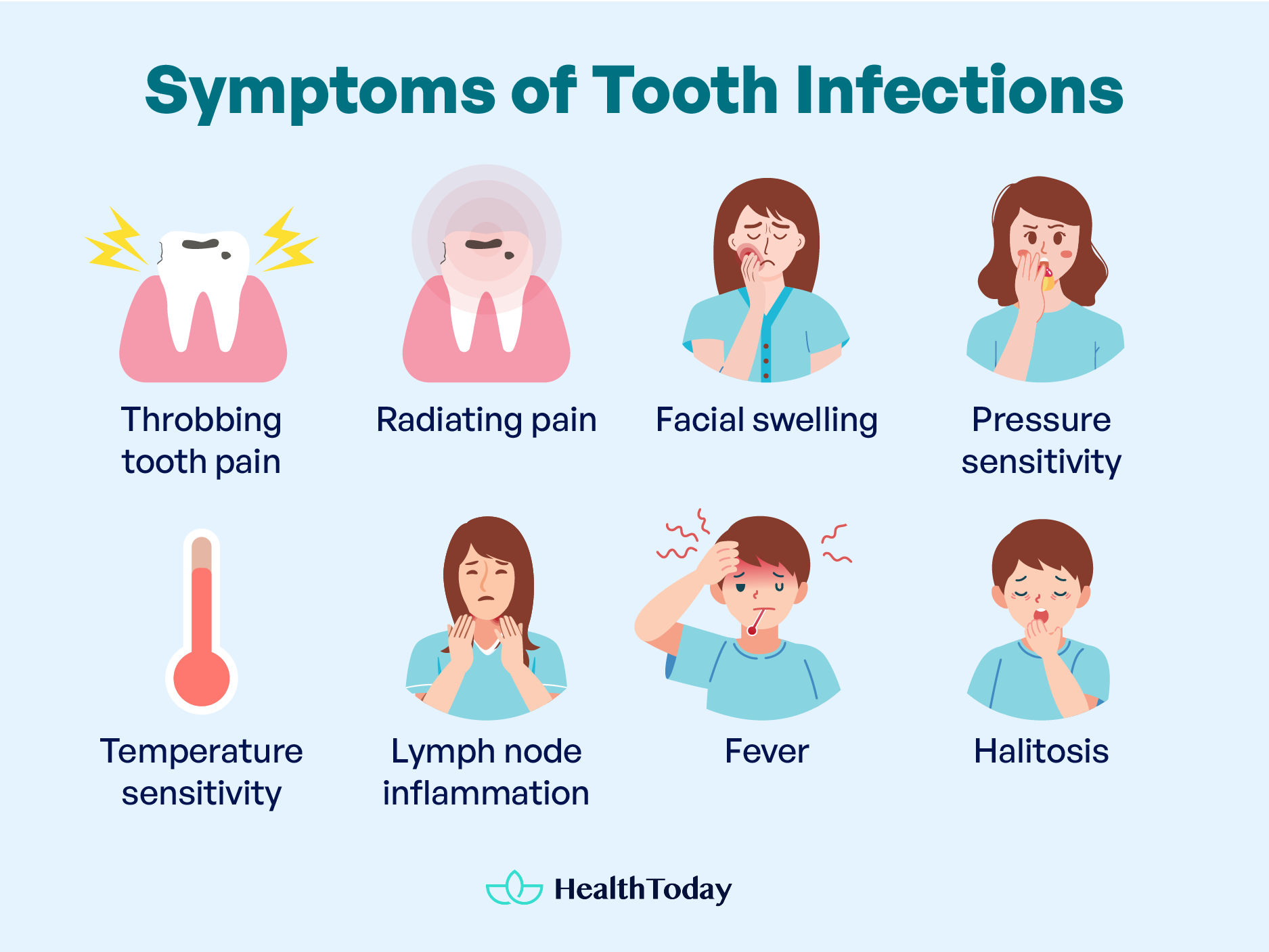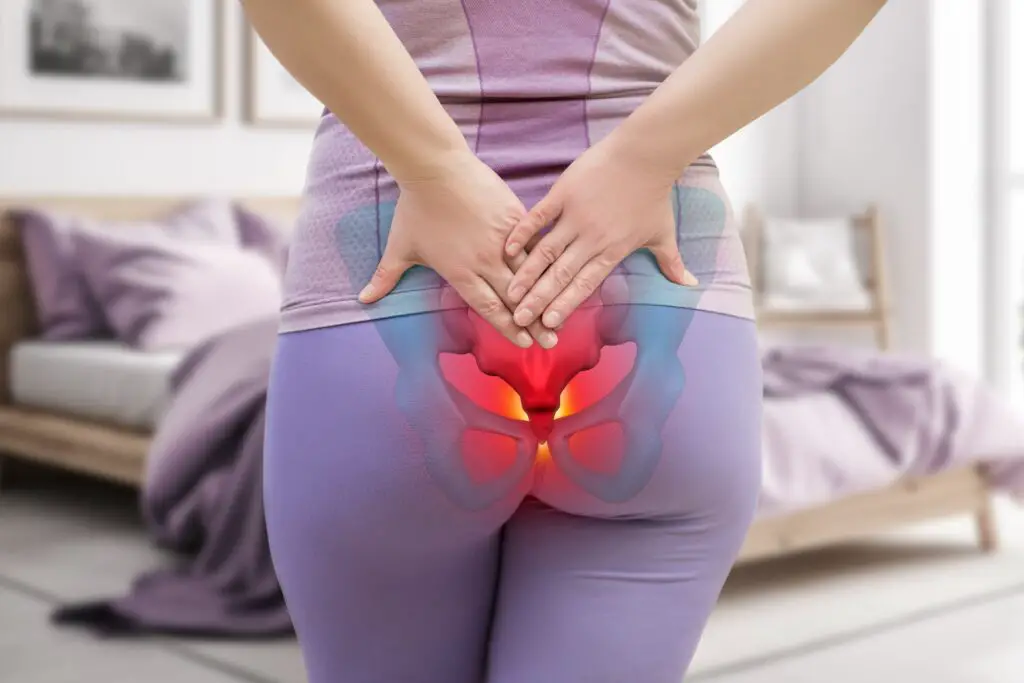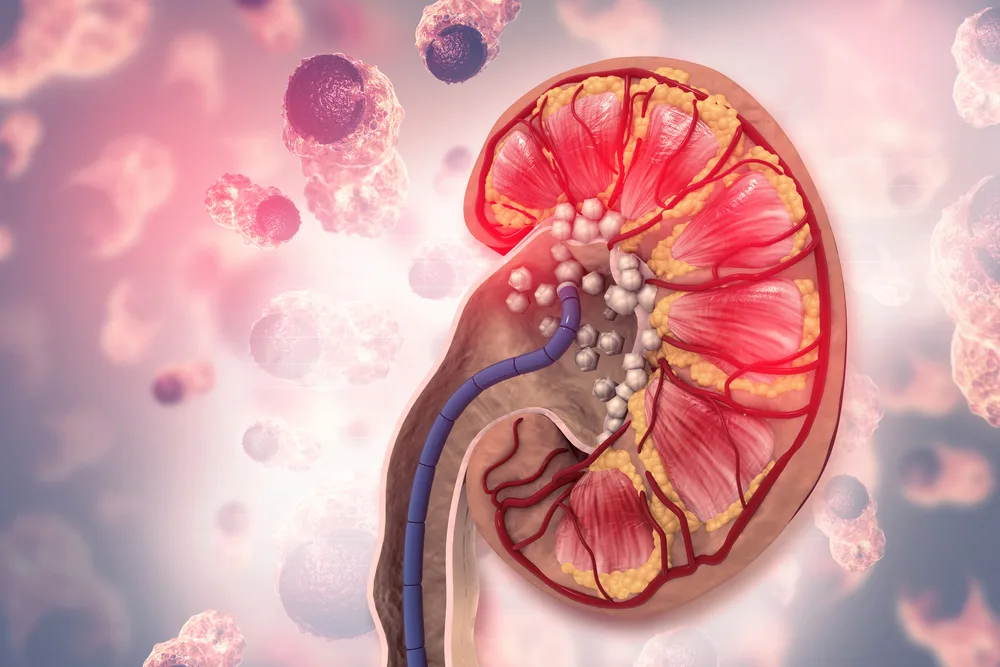Table of Contents
Toothache can go beyond a local discomfort and sometimes has unexpected consequences, such as fever. There is a complex interrelationship between these two conditions. To intervene in time, it is important to understand when toothache causes fever.
In this article, we will answer the question “Can tooth pain cause fever” and discuss the details of dental infections, their symptoms, complications, the different treatments, and the importance of seeking professional help when the toothache becomes a precursor of broader health problems.
What conditions can cause toothache and fever?
Experiencing a toothache along with fever is often a red flag, signaling an underlying dental issue that demands attention (1, 2). Dental infections, such as abscesses, gum infections, or neglected tooth decay, can pave the way for bacterial proliferation, setting off an inflammatory cascade that increases body temperature. It’s imperative to delve into these conditions to discern when an ordinary toothache might indicate a more serious concern.
Triggering conditions of toothache and fever
Toothaches accompanied by fever typically trace their roots to dental infections. Understanding the following conditions is key to grasping the gravity of a toothache:
Dental abscesses: Dental abscesses, characterized by the formation of pockets of pus around the tooth, are critical situations that can generate serious complications, first local, affecting the surrounding tissues, and then systemic, with bacteria traveling through the bloodstream, which can lead to serious complications, such as endocarditis in some individuals (3).
Gum infections: Infections in the gums can lead to localized or widespread discomfort, often accompanied by increased body temperature (4).
Untreated tooth decay: Neglected cavities provide a breeding ground for bacteria, fostering the spread of infection and inflammation.
Recognizing the symptoms of tooth infections

Spotting the signs of an infected tooth is crucial for timely intervention. Be alert to the following symptoms (5):
- Throbbing tooth pain: Pulsating dental pain refers to a constant, rhythmic discomfort in the affected tooth that may intensify with activities such as chewing or exposure to hot or cold stimuli.
- Radiating pain: Characterized by a stabbing sensation that extends beyond the affected tooth and reaches the jaw, ear, or neck on the same side of the affected area. This pain radiates and suggests an involvement of surrounding tissues and nerves. In addition, discomfort may occur when moving the jaw, or also present as ear pain or affect the neck muscles on the affected side.
- Facial swelling: Presents as an enlargement of the cheek region, often accompanied by tenderness and warmth, suggestive of periodontal abscess. In severe cases, the swelling may be pronounced, distorting the facial contour and causing noticeable discomfort. Significant facial swelling can make it difficult to open the mouth fully, affecting essential activities such as eating and speaking. This restriction of mouth movement is a clear indication of an advanced dental infection.
- Pressure sensitivity: Discomfort when applying pressure in the mouth.
- Temperature sensitivity: Reactivity to hot or cold foods and drinks.
- Lymph node inflammation: Tenderness or swelling of lymph nodes in the neck.
- Fever: An elevated body temperature indicative of an inflammatory response.
- Halitosis: Unpleasant breath due to the infection.
Timely recognition of tooth infection symptoms is crucial. Be alert for symptoms such as throbbing tooth pain, pain that radiates to the jaw or neck, facial swelling, pressure and temperature sensitivity, inflammation of the lymph nodes, fever, and halitosis. These signs indicate potential dental issues that require immediate attention.
Preventing toothache: What can I do?
The best care you can take to avoid toothache is to maintain good oral hygiene. This preserves the oral health, which in turn protects against tooth decay. Here are some simple things you can do to reduce the risk of toothaches.
1. Brush twice a day
Brushing is the most important thing a person can do to maintain oral health (6). It is done to remove plaque and food debris from the surfaces of the teeth. Plaque harbors bacteria, and these organisms convert food debris into acids that damage teeth. When plaque is left on tooth surfaces for a long period of time, it calcifies and becomes tartar. Like plaque, tartar facilitates tooth decay but cannot be removed by brushing or flossing.
2. Floss daily
Flossing serves the same purpose as brushing. It removes food debris and plaque from tooth surfaces. Since the bristles of a toothbrush cannot reach the narrow spaces between teeth, floss is used to clean these areas. Not flossing leaves a person susceptible to cavities, regardless of how often they brush their teeth. Cavities are one of the most common causes of toothache (6).
3. Limit consumption of sugary foods and beverages
One of the most harmful things to your teeth is sugar. It has an acidic nature and loves to stick to the surfaces of the teeth (6). Oral bacteria also love sugar, as they consume it and turn it into acids. People who consume a lot of sugary foods and drinks are more prone to cavities. Patients are advised to keep sugar consumption to a minimum to avoid toothache. Dentists recommend to rinse your mouth after eating sugar or sugary foods and drinks.
4. Drink plenty of water
Drinking water is good for a person’s overall health, and it is also good for dental health. Water helps hydrate the mouth, which promotes saliva production. Saliva is a natural liquid that neutralizes acids in the mouth and eliminates bacteria. It also contains minerals that strengthen tooth enamel. Drinking water after eating also helps remove food debris that may remain on the teeth (6).By following these practices, you can maintain optimal oral health, prevent dental infections, and avoid toothache and fever. Regular dental care is an integral part of your overall well-being.
When to see a doctor?
When dealing with a toothache and fever, understanding when to seek professional help is crucial (1, 5, 6). A toothache can be due to various causes, but a fever often suggests a more serious dental infection. In this situation, you should visit your dentist promptly.
A fever accompanying a toothache is your body’s inflammatory response to an infection. Dental issues like abscesses or advanced decay have the potential to spread beyond the affected tooth and impact nearby tissues.
Never disregard ongoing fever and toothache, as they could signal the necessity for professional intervention. Timely medical attention not only alleviates discomfort but also mitigates the risk of future complications.
Dealing with a fever caused by a dental infection
Treating a fever caused by a dental infection requires a consultation with a dentist. They will evaluate your dental condition and diseases and recommend different treatments depending on the problem, such as antibiotics, drains, or tooth extraction. While waiting for your consultation with a professional, you can take the following therapeutic measures at home (6):
1. Pain control: Over-the-counter medications, such as acetaminophen or ibuprofen, can help control toothache and fever. These drugs relieve pain and help mitigate the inflammation associated with dental infections. It is essential to follow the dosing instructions on the medication container to ensure safe and effective relief of symptoms. Always consult a healthcare professional or pharmacist about the appropriate medication.
2. Cold compresses: Applying a cold compress to the affected area can reduce inflammation and relieve pain and fever.
3. Avoid triggering foods: Avoid extremely hot, cold, or sugary foods that can exacerbate tooth sensitivity.
How long can a dental infection go unnoticed?
The evolution of dental infections can vary and depends on aspects such as the response of the immune system and the severity of the infection. Sometimes, it may begin subtly, with symptom-free stages, during which dental infections may go unnoticed. When they reach the symptomatic stage, symptoms can vary in intensity from mild pain to swelling that deforms the face and prevents mouth opening. It is impossible to determine a specific time for the onset of these symptoms.
What are the symptoms of dental abscesses?
Dental abscesses manifest with intense, throbbing pain that may extend to the jaw, neck, or ear. Other signs include tooth mobility, tenderness when chewing, fever, facial swelling, swollen glands, and an unpleasant taste in the mouth. Relief usually follows drainage of pus, underscoring the need for prompt, professional attention to prevent complications and ensure effective treatment.
What is the strongest natural antibiotic for dental infections?
Although natural remedies can provide relief, consulting a dentist is essential for effective treatment. Garlic, clove oil, and tea tree oil are known for their antibacterial properties and qualities, but they should complement, not replace, professional dental care (7).
What is the quickest way to stop a toothache at home?
OTC pain relievers and cold compresses offer quick relief from toothache pain, but they only treat symptoms, not the root cause. Therefore, it is necessary to seek professional dental care to address the underlying cause of the toothache. Maintaining good oral hygiene with regular brushing, flossing, and antiseptic mouthwash is also important in preventing dental infections.
Is heat or ice better for a tooth infection?
For dental infections, a cold compress is usually more effective. It helps reduce inflammation and numbs the area, relieving pain and fever. It is recommended to place cold packs 3 times a day, no more than 10 minutes each time; it should never be in direct contact with the skin. Heat can exacerbate inflammation, so cold is usually the preferred option.
Summary
Understanding the connection between toothache and fever is critical to intervene early and treat the problem effectively. The combination of proper prevention by maintaining proper hygiene and professional dental care ensures a comprehensive approach to alleviating discomfort and promoting oral health. Remember that your dentist is your partner for a healthy, pain-free smile.

















Comments
0